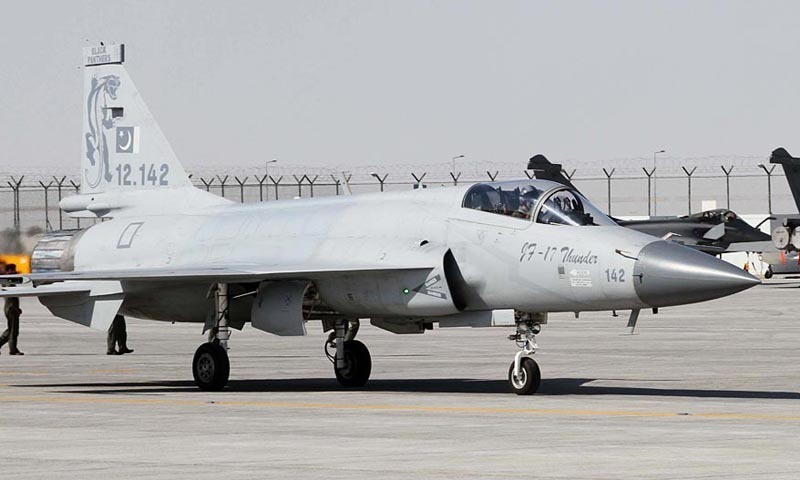http://warisboring.com/china-and-pakistans-twin-seat-budget-fighter-is-impressive/
A two-seat version of the JF-17/FC-1 Thunder, a warplane jointly produced by Pakistan and China, took off for its maiden flight on April 27, 2017. The idea behind the project is to develop a relatively inexpensive fighter at around $25 million per copy that can compete with the U.S.-made F-16 Fighting Falcon.
Pakistan already has dozens of single-seat JF-17s and has used them in combat, targeting insurgents in Waziristan. The Chendu-Pakistan Aeronautical Complex consortium responsible for the jet has secured limited orders in Myanmar and Nigeria.
The Thunder represents a pragmatic and evolutionary approach to warplane design, as the fighter is based originally on the F-7, a Chinese variant of the Soviet MiG-21.
The JF-17 is certainly
not a MiG-21 or an F-7. The Thunder has better wings, a more modern Russian-designed RD-93 engine and a larger nose which can fit China’s KLJ-7 fire-control radar. It doesn’t have any stealth capability, but it’s maneuverable, fearsome—when equipped with beyond-visual-range anti-air and anti-ship missiles—and it’s cheap.
Which counts for a lot.
There are some differences apparent with the two-seat version, the JF-17B. It is porpoise-shaped owing to an extra fuel tank in the dorsal spine. The vertical stabilizer is larger and shallower, as
IHS Jane’s pointed out, and the overall plane appears to have a slightly longer length.
Most likely, the JF-17B will be primarily flown as a trainer with an instructor riding in the back. But the tandem-seat variant opens up the possibility of adding a dedicated navigator, radar intercept officer or weapons officer similar to the F-15E Strike Eagle or F/A-18F Super Hornet.
Twin seats are not strictly necessary in modern fighters, but they can free up workload for surveillance, electronic warfare and attack missions. Additionally, an extra officer aboard can help in air-to-air dogfighting by providing an extra set of eyes.
Like its single-seat sibling, the JF-17B has a ramped-up cockpit more closely resembling the Swedish JAS-39B Gripen instead of a “bubble” canopy, which is a potential downside as there is a blind spot in the rear. Because of Pakistan’s experience flying the F-16, the Thunder uses a similar display symbology. The wing, also similar to the F-16, is another sign of evolutionary, hybrid philosophy behind the JF-17.
Mainly, it’s functional and not too expensive—and it’s
not American or dependent on supply chains extending into the United States. That’s important for Pakistan which has been trying to wean itself off dependence on U.S. military support.
Other countries in Asia, Africa and Latin America may look to the JF-17 as a practical warplane for the non-aligned world, or at least an affordable one. Now there’s a two-seat version to tag along.









